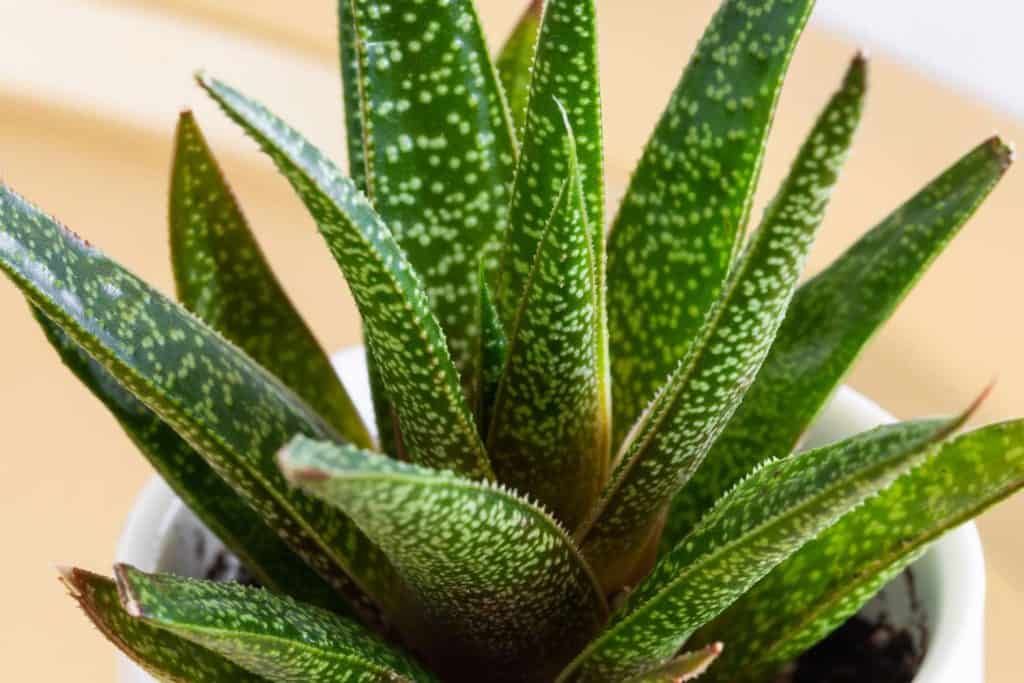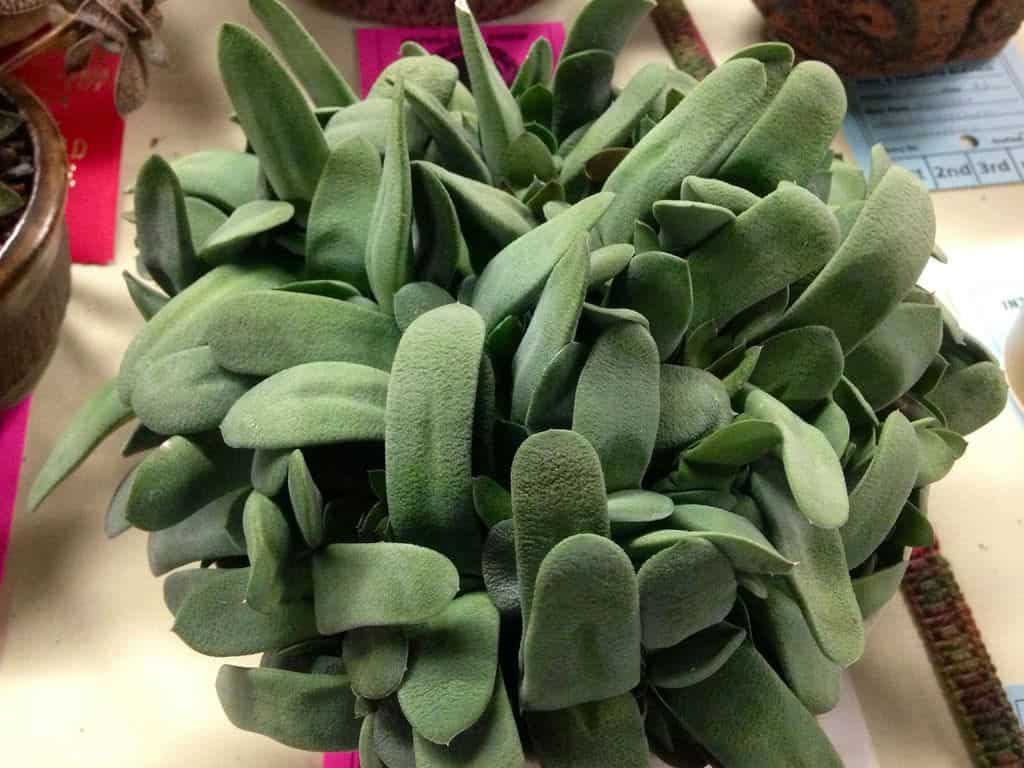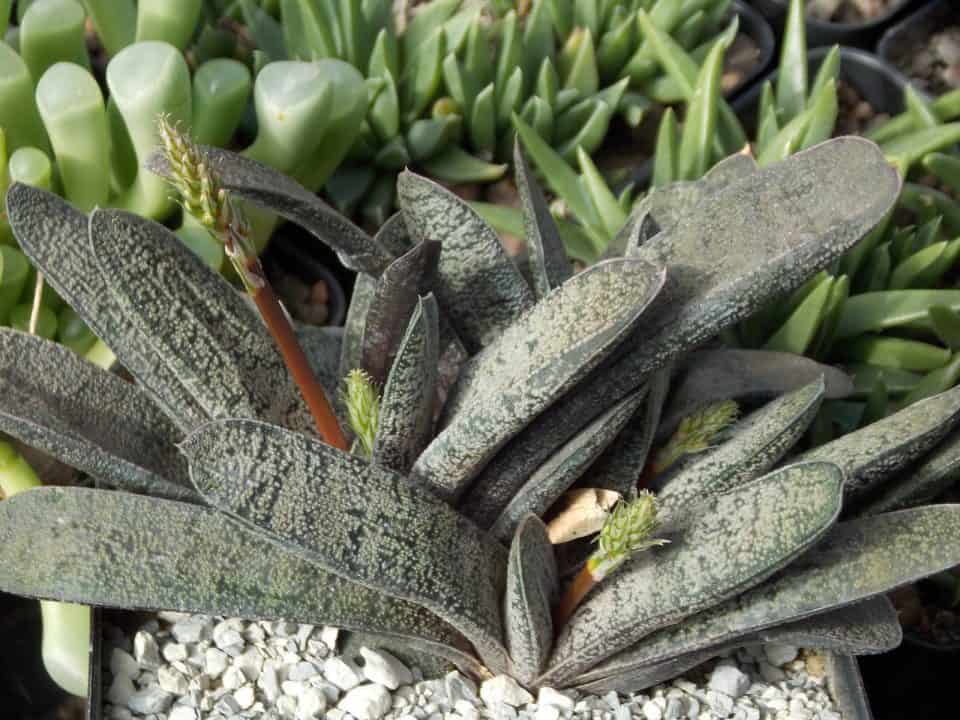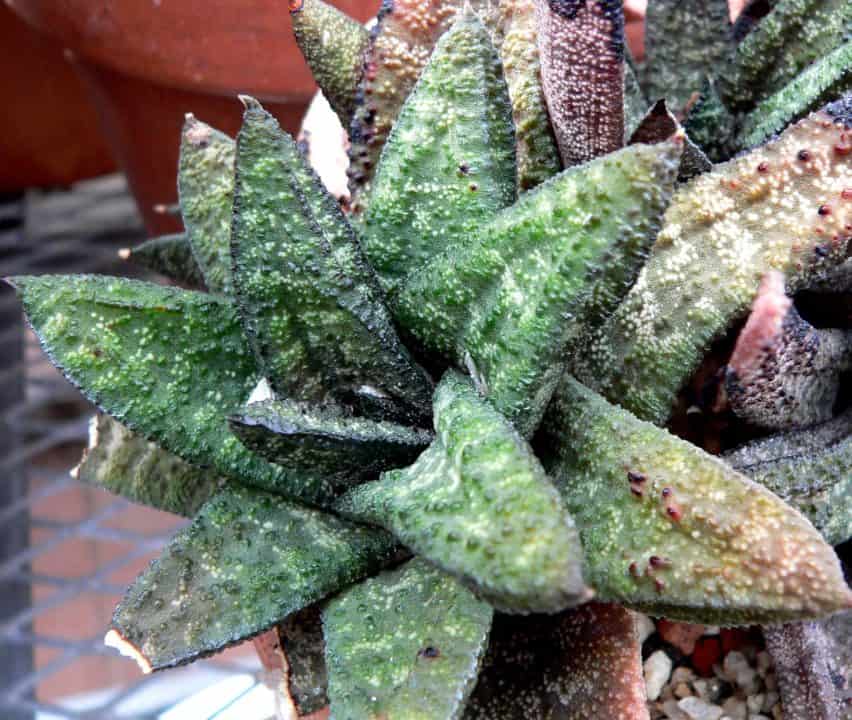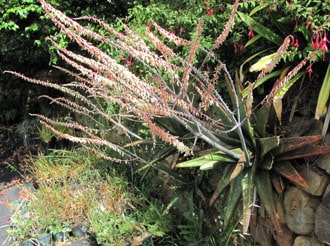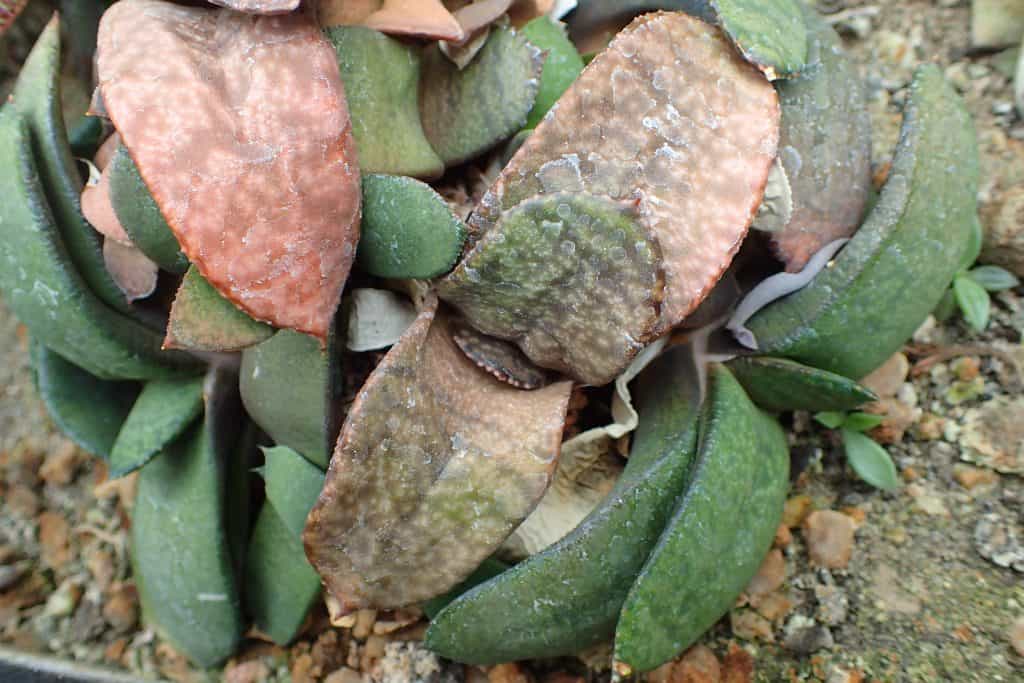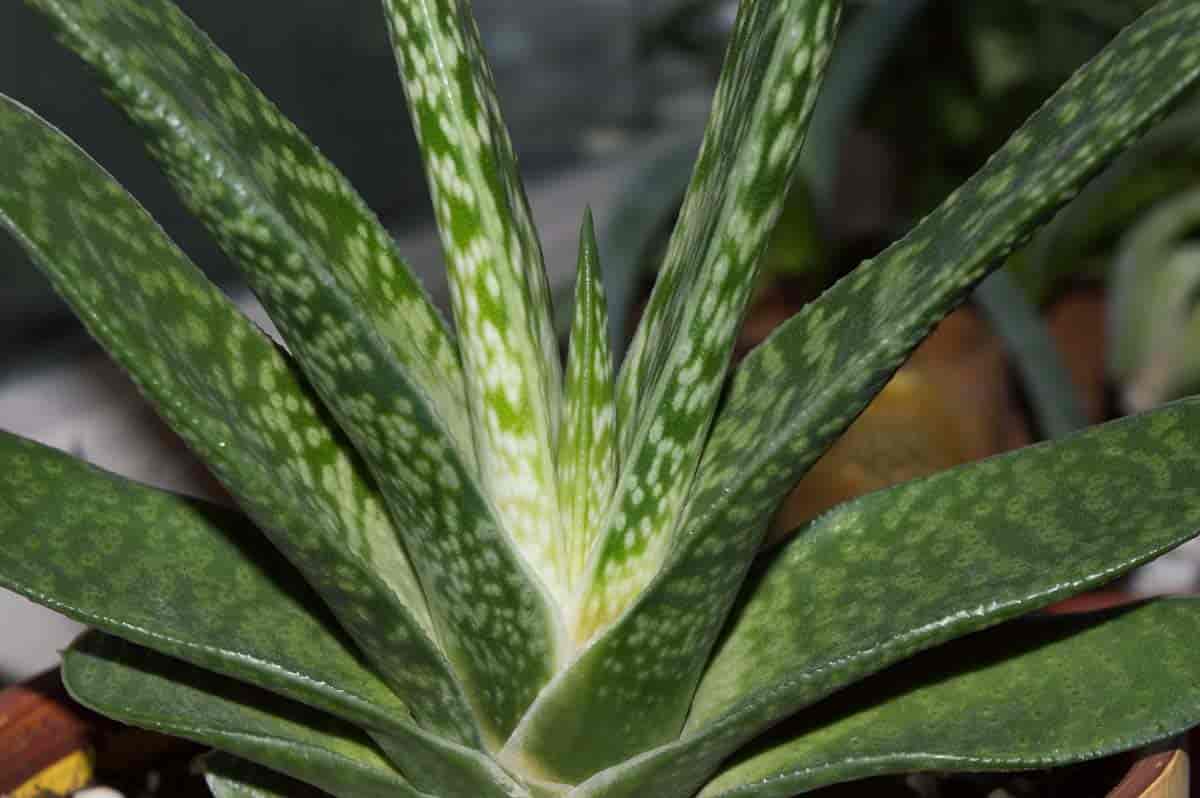Gasteria maculata, previously called Gasteria bicolor or Gasteria obliqua, is a great succulent houseplant that is low-maintenance and adds color to your home year-round. It is a succulent plant with a unique texture and shape. Native to South Africa, Gasteria maculata grows up to 12 inches tall, with leaves reaching up to three inches in length and two inches in width.
This hardy plant requires little sunlight, warm temperatures, and plenty of water, making it ideal for indoor or outdoor use regardless of weather conditions.
While not as well-known as other succulents like aloe vera or jade plants, Gasteria maculata has been around since 1840 and is gaining popularity as more and more people discover its unique looks and the many reasons to grow it indoors.
It has a unique texture and many interesting traits that make it an ideal houseplant. It’s able to thrive with very little care and can even survive in low-light situations! It’s also extremely durable, with the only real way to kill it being overwatering it or letting the soil completely dry out.
If you’re looking to add some interesting character to your home or office garden, learn more about Gasteria maculata and how to care for it below!
Origin and distribution
Gasteria maculata is a succulent plant that originates from South Africa. It is commonly found in the Eastern Cape Province, where it grows in rocky, sandy soils. The plant has also been introduced to other parts of the world and can now be found in Australia, Europe, and North America.
When it first arrives at its new location, this species prefers low-light conditions. Once acclimated to its new environment, gasteria maculata will thrive in full sun and tolerate less-than-perfect growing conditions such as drought or cold temperatures. Because it does not have roots, you will need to provide some type of container for the soil.
For example, an earthenware pot would work well because it can easily be placed on top of your houseplant soil without using any additional materials. You should water your plant when the top 1 to 2 inches (2 to 5 cm) are dry (this could take anywhere from 1 to 3 weeks). Make sure that your water isn’t too hot because this may scorch or kill your plant.
Gasteria maculata propagation
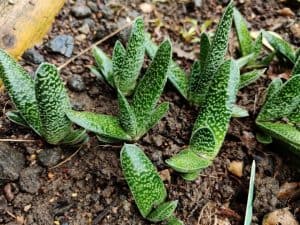
Gasteria maculata is a slow-growing succulent that can be propagated by offsets or leaf cuttings. When propagating by offsets, simply remove the offset from the mother plant and allow it to dry for a few days before replanting.
For leaf cuttings, cut a leaf from the mother plant at the base of the leaf and allow it to dry for a few days before replanting. You can also take leaves from a gasteria maculata in your own home and pot them up in individual pots with soil mix.
In order to grow new plants, you will need one-inch deep containers with drainage holes at the bottom and pebbles on top. Make sure you place these containers near a window where they get plenty of natural light but not direct sunlight.
If growing indoors, make sure the temperature is around 70 degrees Fahrenheit. These plants are very sensitive to cold so make sure there is enough warmth and humidity in their environment when growing outdoors.
Gasteria maculata care information
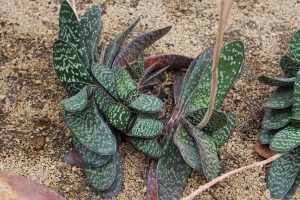
Gasteria maculata is a low-maintenance plant that’s easy to care for, and it can tolerate neglect better than most other succulents. The main thing to remember with this plant is not to overwater it, as too much water can lead to root rot.
Light requirement
Gasteria maculata is a succulent that originates from South Africa. It’s a low-maintenance plant that can tolerate low to bright light. However, too much direct sunlight can cause the leaves to fade. The best way to determine how much light your plant needs is to observe the leaves. If they start to yellow or fade, it’s an indication that it’s getting too much sun.
Soil/potting mix
Gasteria maculata is a succulent plant that grows best in well-draining soil. You can either grow it in a potting mix made specifically for succulents or make your own by mixing together equal parts sand, perlite, and peat moss.
Be sure to use a pot with drainage holes to ensure the water drains properly from the bottom of the container. The top layer of the pot should be about 2 inches deep.
Watering
Gasteria maculata is a drought-tolerant succulent that does best with infrequent watering. When you do water, make sure to soak the soil thoroughly and then allow it to dry out completely before watering again.
Be careful not to overwater, as this can lead to root rot. For the same reason, never let your plant sit in water. If you live in an area where there are heavy rains throughout the year, consider growing your gasteria in a container instead of in-ground.
Fertilizer
When it comes to fertilizer, less is more. Gasteria maculata doesn’t need much to thrive—in fact, too much fertilizer can burn the roots and damage the plant. If you do fertilize, use a succulent-specific fertilizer that’s diluted to half-strength once a month during the growing season.
And never apply fertilizer to gasteria maculata plants when they’re wet; allow them to dry first. It also helps if your potting soil drains well because these plants don’t like soggy soil.
Temperature
The ideal temperature for Gasteria maculata is between 65-75 degrees Fahrenheit. They can tolerate brief periods of cold weather, but prolonged exposure to temperatures below 50 degrees Fahrenheit can damage the leaves. In hot weather, provide shading to prevent the leaves from burning.
Humidity
Gasteria maculata is a type of succulent that’s native to South Africa. These plants are known for their interesting leaf texture, which can range from smooth to bumpy. They’re also relatively easy to care for, and they don’t require a lot of humidity. If you live in a dry climate, however, you may need to mist your plant occasionally.
The ideal humidity range is between 40% and 60%. You should avoid letting the soil dry out completely, but it’s not necessary to water these plants every day. As long as the soil isn’t bone-dry, there should be enough moisture retained inside the leaves for them to thrive.
Pruning
While Gasteria maculata is a slow-growing plant, it will eventually need pruning. Pruning helps to encourage new growth and also keeps the plant looking tidy. To prune, simply cut off any dead or dying leaves. You can also remove any leaves that are crowding the plant.
Just use clean scissors to cut them off at the base of the stem. It’s best not to be too aggressive with your pruning because these plants don’t grow very quickly! If you want to keep your plant in a smaller pot for an extended period of time, you may need to do some trimming of roots every few months.
When to repot
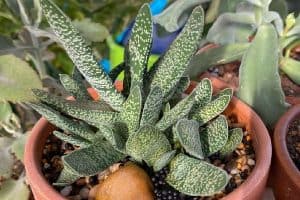
Gasteria maculata is a slow-growing succulent, so it doesn’t need to be repotted often. Every two to three years should be sufficient. When you do repot, use a well-draining potting mix and be sure not to overwater. Allow the soil to dry out completely between waterings.
Gasteria maculata prefers bright light but will tolerate partial shade. It can also take morning sun if that’s all your location has to offer. The plants are hardy down to 20 degrees Fahrenheit (-6 Celsius).
Dormancy/Winter rest
During the winter, Gasteria maculata enters a period of dormancy. This is a time of rest for the plant when growth slows and the leaves may drop off. watering should be reduced during this time, as the plant needs less water to survive.
Allow the soil to dry out completely before watering again. If you live in an area with extremely cold weather, it’s best to move your Gasteria maculata indoors during the winter months. Remember that too much light can cause burns on your plants, so make sure to keep them out of direct sunlight.
As long as there are no frost warnings in effect, it’s safe to keep them outdoors during the warmer months – they enjoy being outside and will grow more quickly if they get plenty of sun exposure. However, if frost warnings are in effect (temperatures below freezing), it’s best to bring them inside until spring arrives.
Gasteria maculata flower & fragrance
Gasteria maculata is a beautiful succulent plant that produces small, yellow flowers that bloom in the summertime. The leaves are thick and fleshy with a glossy texture and can grow up to 5 inches long.
There are many different varieties of this plant, but the most common type has green leaves with white spots or lines. It does well in low light conditions and can live indoors for about three years before it needs to be repotted.
Growth rate
Gasteria maculata is a slow-growing succulent plant that originates from South Africa. It has long, fleshy leaves that are mottled with white spots. The leaves grow in a rosette pattern and can reach up to two feet in length. To ensure the plants thrive, it’s important to provide them with ample sunlight. Soil should be well drained but rich in nutrients.
Toxicity
Gasteria maculata is not considered to be toxic to humans or animals. However, as with all plants, it is best to keep it out of reach of small children and pets who may try to nibble on its leaves. The plant’s sap can cause skin irritation in some people, so it is best to wear gloves when handling it. If you get the sap in your eyes, rinse them out immediately with water.
USDA hardiness zones
Gasteria maculata thrives best in USDA hardiness zones 9b-11. If planted outside of this range, be sure to provide it with plenty of shade and protection from the harsh sun.
Gasteria is not tolerant of freezing temperatures, so if you live in a zone where the temperature drops below 40 degrees Fahrenheit, plan on moving your plant indoors during the winter months. They are low-maintenance plants and will do well as houseplants.
Pests and diseases
Gasteria maculata is a hardy plant that is resistant to most pests and diseases. However, mealybugs and scale insects can occasionally be a problem. If you see any of these pests on your plant, simply wipe them off with a damp cloth or spray them with water.
Over-watering can also lead to root rot, so be sure to only water your gasteria maculata when the soil is dry to the touch.
In addition, this succulent does not like bright sunlight for long periods of time. Direct sun exposure will cause it to turn black in color. The best place for this succulent is near a window where it will get indirect light from the sun during the day.
